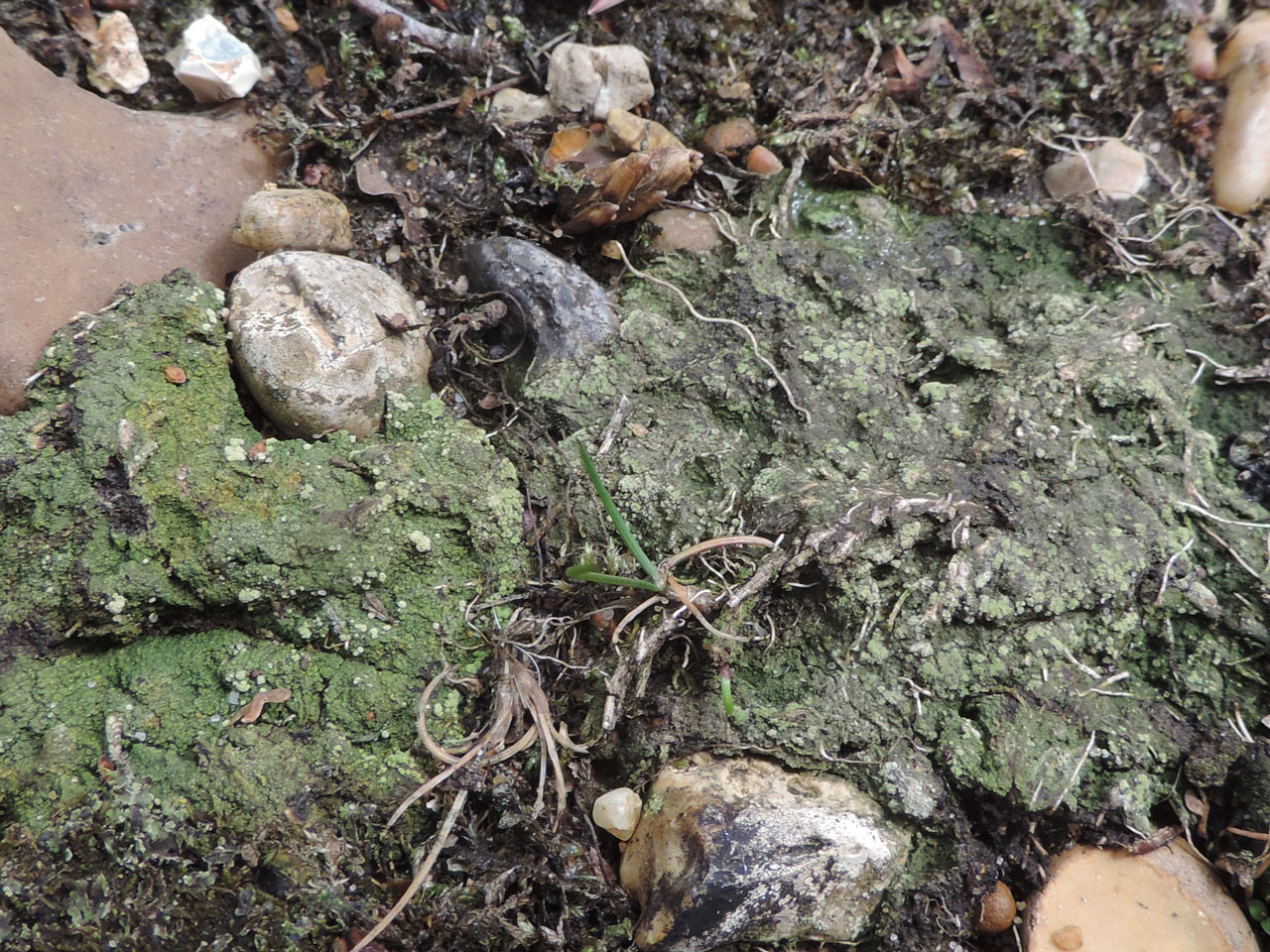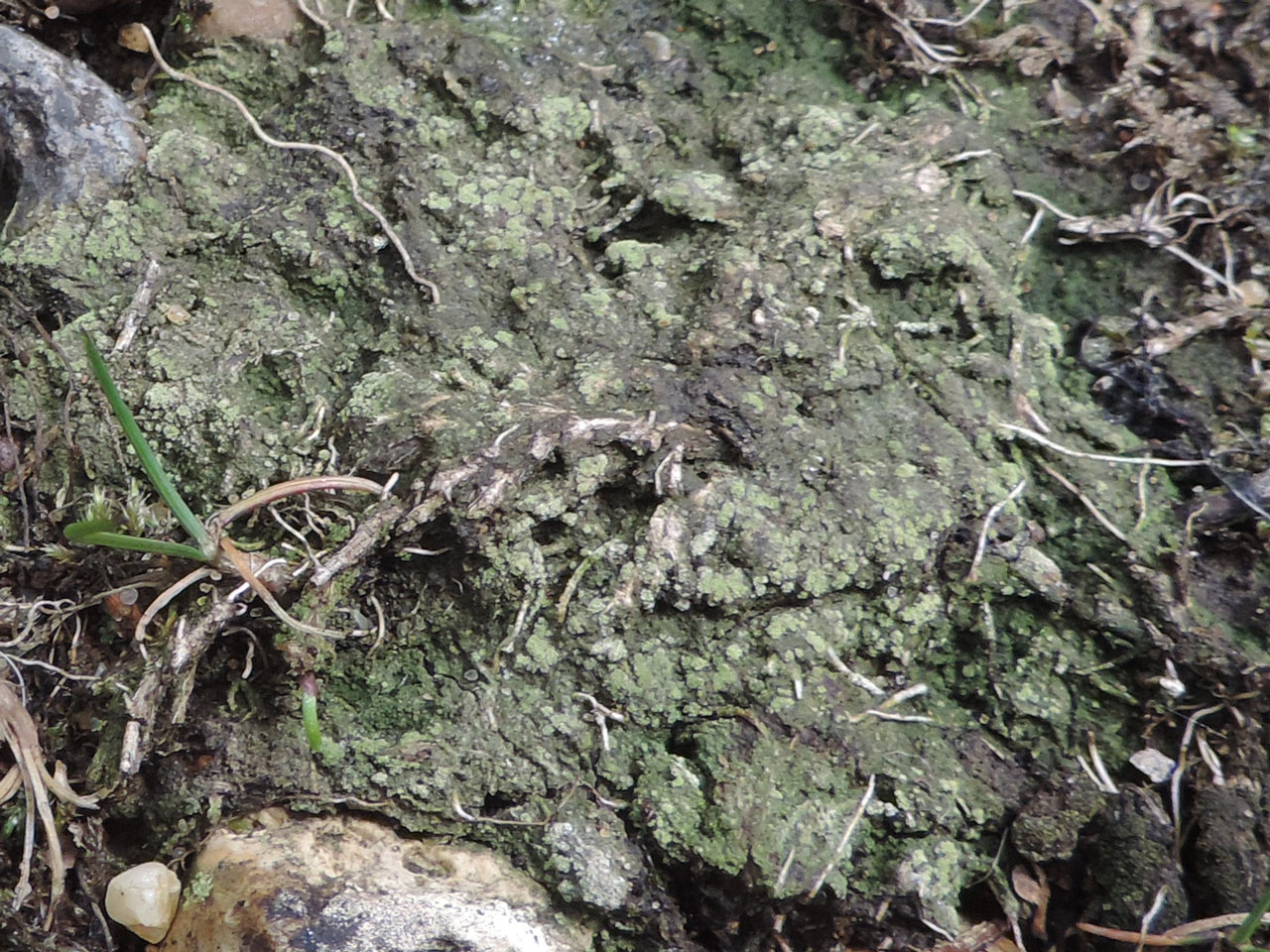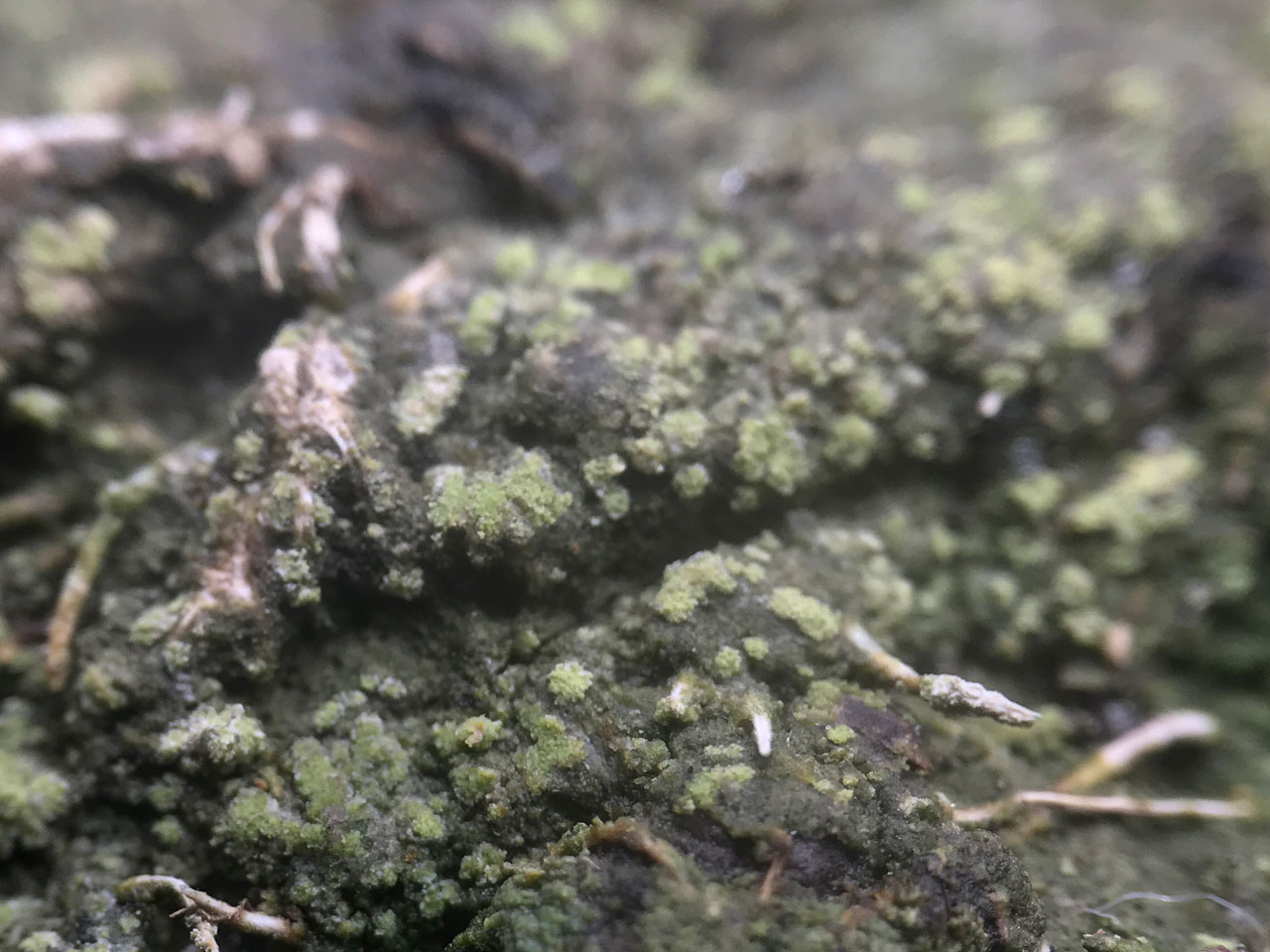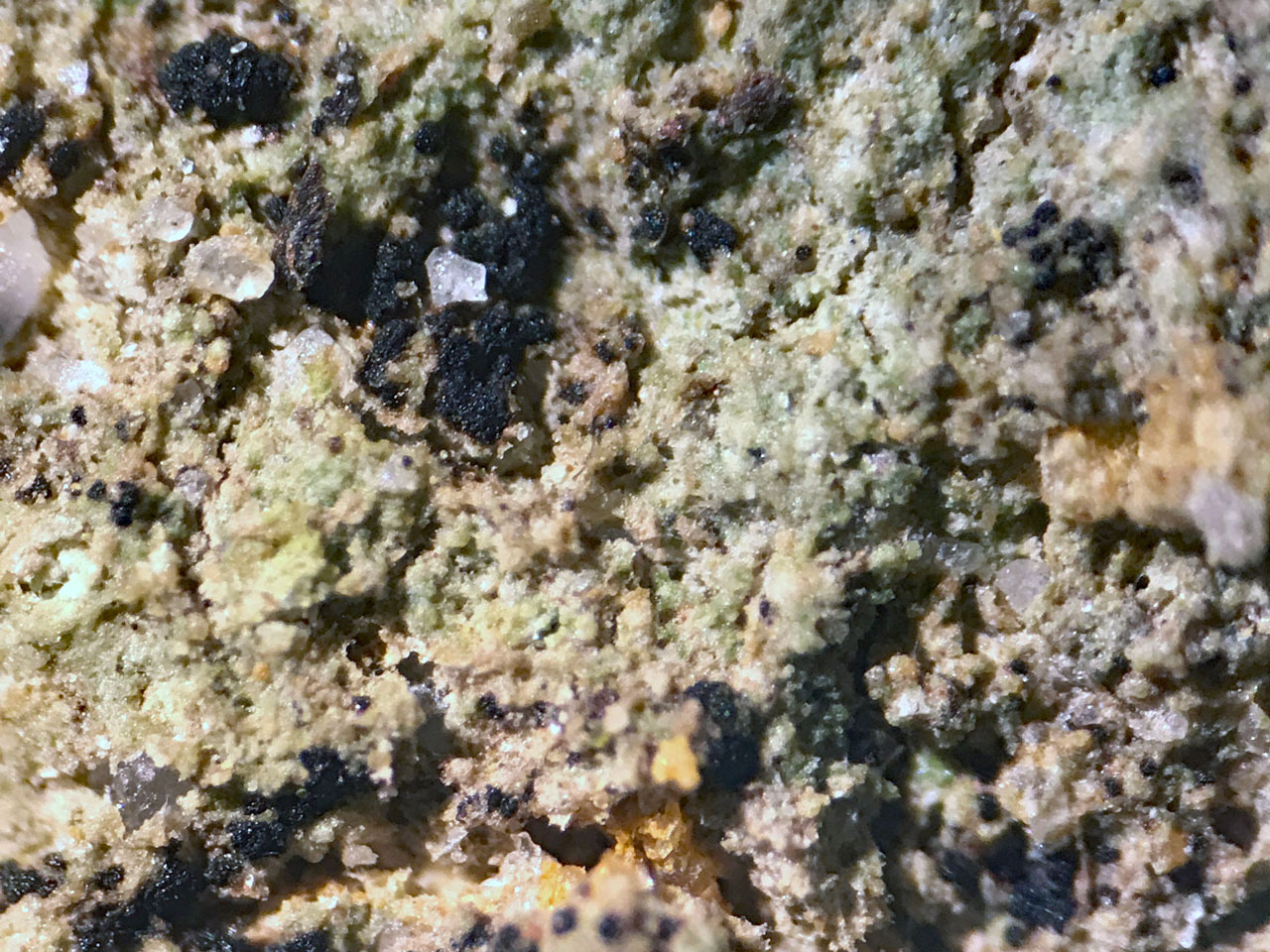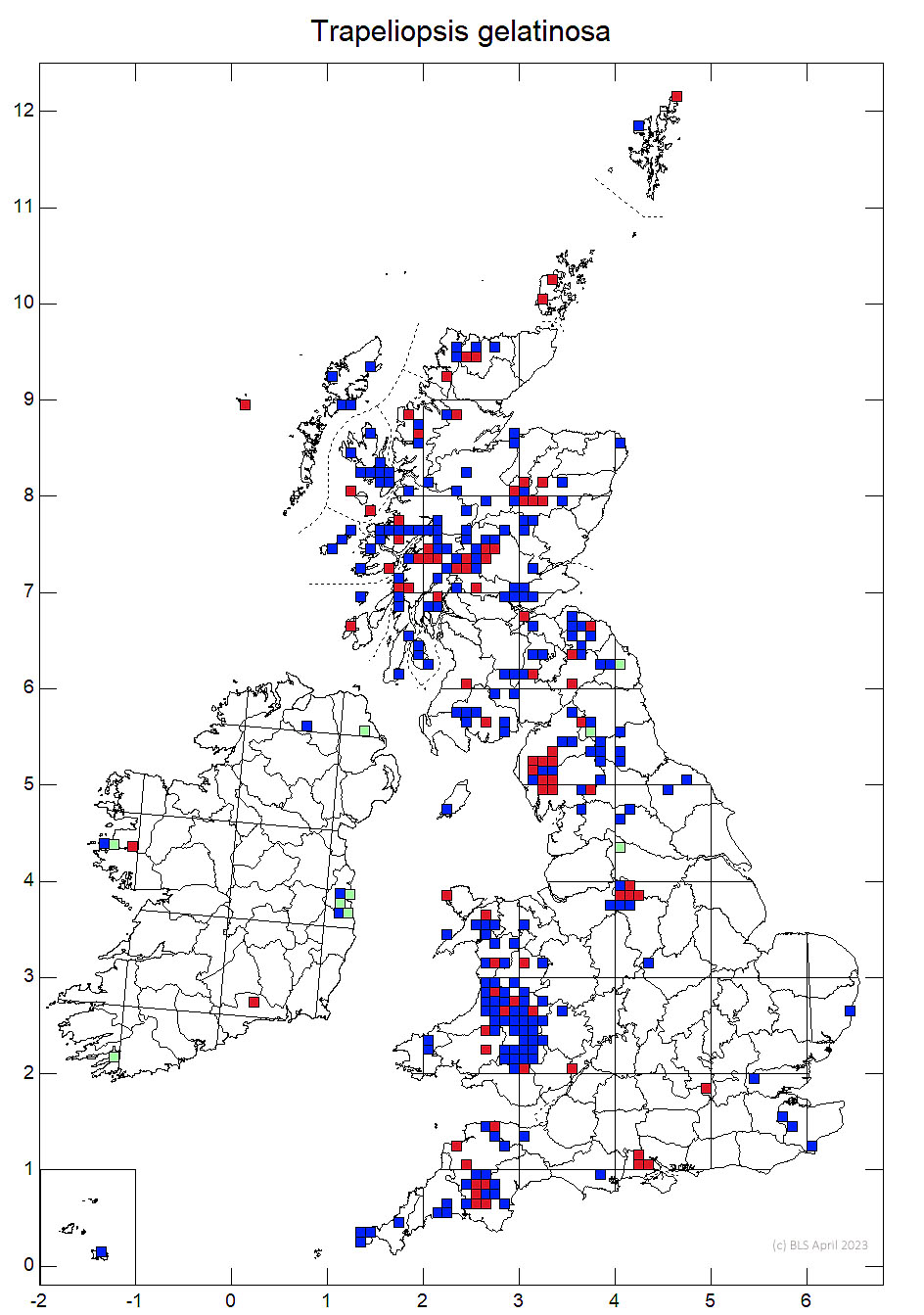A likely rather overlooked sorediate lichen found on shaded and acid banks. Similar to Trapeliopsis pseudogranulosa but this usually has K+ purple orange patches, which Trapeliopsis gelatinosa lacks, is C+ red, while T. gelatinosa is C–, and has tightly packed soredia, while those of T. gelatinosa are loosely packed.
Thallus thin and membranous, or minutely granular, dark green-brown to green-grey, without or often (especially when sterile or sparingly fertile) with pale green soralia, at first ca 0.2–0.7 mm diam., but often becoming very conspicuous, irregular and confluent, soredia loosely packed in the soralia. Apothecia 0.2–1 (–1.6) mm diam., appressed; exciple excluded or as a thin pale rim not exceeding the level of the disc, dark green-grey to grey-black or rarely pale to red-brown; epithecium pigment N+ green intensifying, K+ brown, rarely ± absent. Ascospores 8–14 × 4.5–6 µm. Thallus C–, K–, KC–, Pd–, UV–. The pale green colour of the soralia is in marked contrast with the darker thallus; occasionally no soralia are present on richly fertile thalli.
Trapeliopsis aeneofusca is a rare morph of T. gelatinosa that lacks green epithecial pigment, as suspected by Purvis & Smith (2009) and confirmed using molecular methods by Resl et al. (2015). Often parasitised by the host-specific Bachmanniomyces varius (Coppins, Rambold & Triebel) Diederich & Pino-Bodas (syn. Phaeopyxis varia). Easily overlooked as Trapeliopsis pseudogranulosa lacking orange patches but this is C+ red and has tightly packed soredia.
On shaded peaty or acid clay to loamy soil, mainly in banks or cuttings with overhanging herbs or small shrubs.
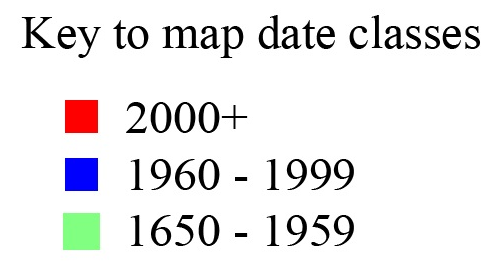
Rather local, especially in upland districts, likely much overlooked on wood banks on acid soil in the lowlands. Rarely recorded from Ireland
Orange, A., Cannon, P., Aptroot, A., Coppins, B., Sanderson, N. & Simkin, J. (2021). Baeomycetales: Trapeliaceae, including the genera Coppinsia, Placopsis, Placynthiella, Rimularia, Trapelia and Trapeliopsis. Revisions of British and Irish Lichens 18: 1-19.
Purvis, O.W. & Smith, C.W. (2009). Trapeliopsis. In Lichens of Great Britain and Ireland (Smith, C.W., Aptroot, A., Coppins, B.J., Fletcher, A., Gilbert, O.L., James, P.W. & Wolseley, P.A. eds): 908–910. London: British Lichen Society.
Resl, P., Schneider, K., Westberg, M., Printzen, C., Palice, Z., Thor, G., Fryday, A., Mayrhofer, H. & Spribille, T. (2015). Diagnostics for a troubled backbone: testing topological hypotheses of trapelioid lichenized fungi in a large-scale phylogeny of Ostropomycetidae (Lecanoromycetes). Fungal Diversity 73: 239–258.
Text by Neil A Sanderson based on Canon et al (2021).
